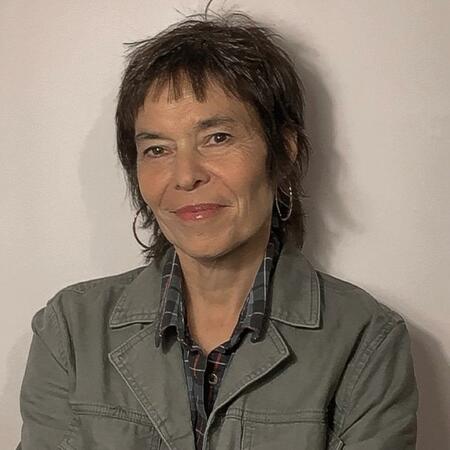Book blurbs are interesting things.
They are there clearly to sell the book by hooking us with an idea of who the protagonist is or where the book may lead us or how its themes may make us think or feel, and they are, by and large, reasonably good at conveying what it is a particular novel is about.
Others however, such as the one for Ginger and Me by Elissa Soaves, seem to promise one thing and deliver quite another, or at least more than blurb might suggest; this isn’t a bad thing, and in fact, it can be thrilling to discover that the book is indeed delivering what the back cover description promised, and has far more places to go than you might have first supposed.
On literal paper at least, Ginger and Me comes across as one those soul-liftingly quirky stories where a person caught on the margin of society, for a whole host of reasons, finds a way to make life richer and more meaningful, often with a found family who are there for, and with, them every step of the way.
In a world not terribly enamoured of second chances, novels like these reassure our world-weary souls that despite appearances and all evidence to the contrary, that second chances are not simply possible but fantastically and wonderful life-changing.
And who doesn’t want to be taken on that kind of transformative journey?
She [Ginger] was charismatic and fun, that’s what people forget when they focus on what happened later. I mean, if you read a book and your favourite character did something terrible on the first page, they’d never get a chance to become your favourite character, would they? No, you have to get to know them a bit first, learn what they like and what it is you like about them. Later when they do things you can’t agree with, well, it’s too late then because you’re committed to liking them regardless. Anyway, there we were – we’d just met and she’d already turned us into Bonnie and Clyde. The way thing ended wasn’t too far from them either but, of course, I didn’t know that then. (P. 50)
Where Ginger and Me very cleverly plays its hand is in taking us far beyond that idea to a place where the expected second chances arc never really eventuates in quite the anticipated way.
In the case of protagonist Wendy, a orphaned nineteen-year-old bus driver who is likely on the autism spectrum, though this is never definitively attributed to her, her new shot at life is taking place under the grief-laden shadow of her mother’s death, which follows a childhood traumatisingly marred by the actions of an alcoholic father who ruined his marriage, neglected his daughter and who, even years down the track, propels Wendy on a journey of aching belonging that sees her make some very poor decisions indeed.
Initially, everything seems wonderfully positive and possible with Wendy’s social worker Saanvi – assigned to her after she crashed and burned following her mother’s passing, neglecting her health and the home that she once shared with her mum – eager to see her make friends, take part in any activities that get her out of the house and renew a life that you could argue has never shown much spark to begin with.
For her part, Wendy, mired in a grief both newly created by her mother’s death and in a trauma a lifetime in the making, doesn’t see the need to make too many changes.
She is a member of a writing group, where her tenuous grasp of the building blocks of sociability – Wendy is blunt and prone to stating the obvious to an almost isolating degree – sees her convinced she is the star writer in the field of mediocre talent and happy to chat to her regular passengers as they get on and off her bus, she feels as content as someone with her history can be with the small shape of her life.
But as Saanvi’s well-intentioned urging, she sets out to make new friends which is how she meets Ginger, a 15-year-old passenger on her bus who has an even more miserable upbringing than Wendy currently in progress, and who, while she lights up around happy neighbourhood dogs and being included by Wendy in dinners and outings to the seaside, is manifestly dealing with some very dark things indeed.
In fact, they both are, and without the ability to work out how Ginger is bad for her – Wendy suspects, all happy moments aside, that she is but she simply doesn’t have the understanding or language to articulate what it is that troubles her or to act on those misgivings – Ginger and Me sees Wendy heading not so much for a reinvention as a spectacularly sad realisation of the dark potential of her life so far.
Contrary to the light and bright indicative narrative direction of the back blurb, Ginger and Me instead heads to the darker part of the human soul, all cloaked in some moments of real humour, particularly when it comes to Wendy’s interactions with her book club members, but always mindful that what we wish for and what we get can be wholly different things.
To go too much further would be to unleash spoilers which would mar the reading of this beautifully written and empathy-laden novel but suffice to say Ginger and Me is sagely sober about the fact that even when second chances present themselves that they may not be quite what you’re looking for.
I smiled. She was right about that because I’d made up my mind – I knew who my real friends were and I wasn’t giving up on Diane. She was my soulmate, and not Potato Head, the police, or even Saanvi could come between us. Our relationship was too precious for that. (P. 289)
Short on the kinds of happy-ever-after endings the book blurb suggests might be in the offing, Ginger and Me is far more accurately described as a deep dive into the hopes and half-realised promises of the human condition.
We witness time and again how Wendy, weighed down by barely-expressed or understood life experiences – she has neither the comprehensions nor the articulative tools to make a full counting of what has happened to her in her blighted life and how she feels about it all – stumbles into people and places that look promising, only to have them not go where she, or Saanvi who doesn’t probe further than Wendy’s almost-knowing dissembling of the truth (Wendy knows enough to give her social worker what she wants to hear), expect them to be.
Wendy, who you feel deeply for but feel powerless to protect from herself, is a victim of an upbringing, and an internal coping narrative that vastly overplays what she’s capable of or what people think of her, imperilling her as a result every step of the way.
That broken and fallible humanity never really gets better, and while Ginger and Me seems to indicate that the world of a lonely bus driver from Scotland might take on more promising or lustrous hues, and that her mistakes may not hobble her for the duration, the novel never pretends anything other than life can be bleak and dark and our efforts to allay or heal from that may come to nothing.
That’s not to say that Ginger and Me is too weighty a read; it is in many ways the complex kind of story that is both light and dark, hopeful and manifestly not, and very human and there are more than a few times when it seems a happy ending may yet make it’s presence felt; that it doesn’t speaks to the strength of Soaves’ writing which manages to be so true to life and what it means to be alive on this planet where fairytale wands are rarely waved, that it will leave you gasping at its raw immediacy and a protagonist, aching for love and connection of the most understandable kind, who deserves the world but may not ever get it, at least not in the way she expects, weighed down as she is by an understanding of the world and the people in it that precludes the very happiness she seeks.

